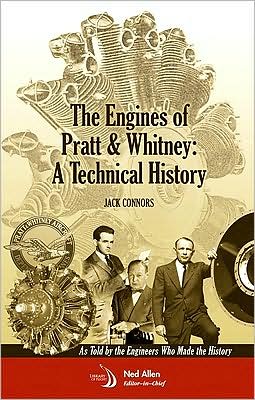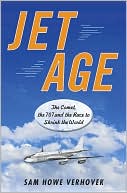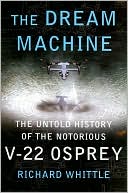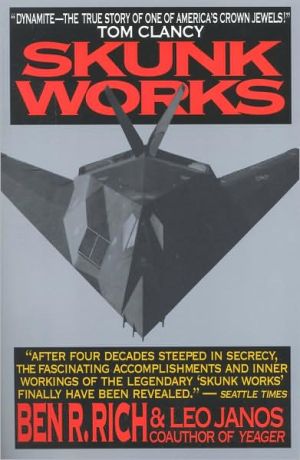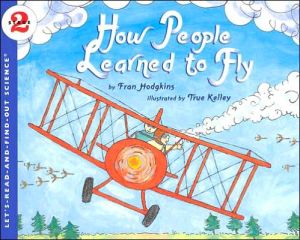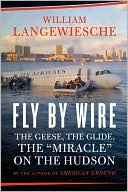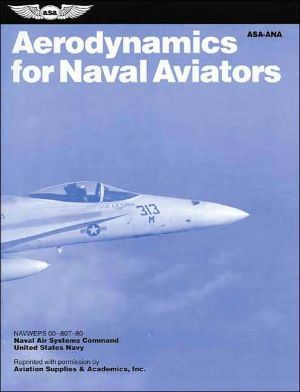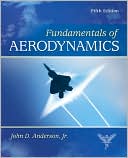The Engines of Pratt & Whitney: A Technical History
The Engines of Pratt & Whitney: A Technical History recounts the role played by Pratt & Whitney (P&W) in the evolution of aircraft engines from 1925 to the present time—for the most part as told by the engineers who made the history. A technical reference of all P&W engines and their applications, the book describes the evolution of piston engines and gas turbines, and offers young engineers a wealth of insights about design, development, marketing, and product support efforts...
Search in google:
The Engines of Pratt & Whitney: A Technical History describes the evolution from piston engines to gas turbines by the engineers who created those engines. Included are hundreds of archival photographs, as well as over a dozen tables listing specifications and applications.The story starts with the founding of the company in the 1920s to provide reliable air-coaled piston engines to the military and to help create coast-to-coast commercial flight service. Pratt & Whitney quickly dominated commercial and military flight in the 1930s-ultimately providing half the horsepower of American engines during WWII.Jack Connors explains how Pratt & Whitney came from behind the competition developing gas turbines after the war with the debut of the J57, which powered the B-52 in 1952 and later the Air Force Century Series fighters (F-100, F-101, F-102) and the Navy A3D, F4D, and F-8 airplanes. Also covered is the development of the J58, which powered the Mach 3+ YF-12 and SR-71 aircraft, and subsequent military engines-the TF30 in the F-111; the F100 in the F-15 and F-16; the F119 in the F-22; and the F135 in the F-35 series. Pratt & Whitney's contribution to the luxury commercial jet era travel is also detailed, with its JT3, JT3D, JT4, JT8D, JT9D, PW2000, PW4000, and PW6000 in Boeing, Douglas, and Airbus aircraft.This history of Pratt & Whitney's role in the evolution of aircraft engines from 1925 to the present day offers young engineers a wealth of insights about design, development, marketing and product support for commercial and military customers.
Preface xvAcknowledgments xviiChapter 1 Pre-Flight Briefing 1Introduction 1How the Marketplace Changed Since 1925 1Pratt & Whitney's Five Defining Moments 8Pratt & Whitney's Founders 9The Founding of Pratt & Whitney Aircraft Company 12The R-1340 Wasp Joins the Navy and Air Mail Service 16The Formation of United Aircraft & Transport Corporation 18The Break Up of UA&TC 19Pratt & Whitney's Great Contribution in World War II 22The Aircraft Gas Turbine Business after World War II 23Rentschler's Accomplishments 27Rentschler's Final Years 28References 28Chapter 2 The Early Years 31George Mead and His First Pratt & Whitney Engine 31Liquid-Cooled Engines 32Air-Cooled Engines 33Summary of Aircraft Engine Growth 47George Mead and the T-Engine 48Mead and Willgoos Design the Wasp in 1925 50Mead Flies with Wasp on Mail Routes 57Epilogue for George J. Mead 58References 60Chapter 3 The Later Piston Engine Years 61Introduction 61Hobbs Reveals the Secret of Success 63Succession of Pratt & Whitney Engines 64The Wasp and the Hornet 67Roles of Wasp and Hornet in International Commercial Aviation 79Wasp and Hornet Engines Are Refined 82The Contributions of Two Engineers 120References 123Chapter 4 The Piston Engine Experience 125Introduction 125Pratt & Whitney Flight Test Organization 125R-4360 Test Flight 127R-4360 Flies from Hawaii to Chicago 129R-1830 Brings the Crew in Safely 130R-1830 and Superchargers 132Life as a Test Engineer 134R-2800C Program 136Controllable-Pitch Propeller 137R-2800-32W's Rough Idle 138R-1830s and the Luftwaffe 138R-1830 Bearing Problem139R-1535 and Howard Hughes 141Boeing 247's Wasp Engine Whine 142Pratt & Whitney Engines with Fuel Injection 143Liquid-Cooled Engines-Side Trip to Nowhere 145Looking Back on Piston Engine Development 149Final Observations on Piston Engines 157References 159Chapter 5 Transition To Gas Turbines 161Looking Back 161Beginnings of PT1 162PT1 Program 167Hobbs Moves to Gas Turbines 172PT2 Program Begins 176PT2 in the Lockheed Constellation 182Two Engineers Rise to Prominence at Pratt & Whitney 182References 186Chapter 6 WWII Ends and Turbojet Development Begins 189Pratt & Whitney Service Organization 189Army and Navy Engine Training School 192Turbojet Development Begins 196American Companies Enter the Jet Age 197European Development 199Pratt & Whitney's First Turbojet Success 203The J48 (JT7) 208References 214Chapter 7 Birth of the Two-Spool Turbojet 215Introduction 215Genesis of the J57 216Meeting the Challenge of Creating Enough Propulsion 219Concerns Regarding High-Pressure-Ratio Compressors 221Technical Concerns of a Twin-Spool Turbojet 221Air Force Approval for PT4 to JT3 Switch 223Description of JT3-8 224Description of the JT3-10 226Soderberg Recommends a New Start 227JT3A with a Wasp Waist Design 229The J57 in the B-52 238JT3 Commercial Derivative 252Hobbs' Reflections on the Dawn of the Jet Age 254References 255Chapter 8 Four Moreturbojets 257Introduction 257J75 (JT4) Twin-Spool Turbojet 257J52 (JT8) 270J91 (JT9) 279J60 (JT12) Turbojet 285References 290Chapter 9 Transition To Turbofans 291Introduction 291Birth of the Turbofan 291T57/PT5-Pratt & Whitney's Most Powerful Turboprop 293JT10 Afterburning Turbo-fan 294JT3D/TF33-Turbofan Fever Fuels Innovation 296Three Programs Herald the Future 310Suntan Project 310Conclusion 317References 317Chapter 10 Higher and Faster 319Introduction 319RL10 Program 319J58-Growing Mach Capability 321Liquid Air Condensing Engine (LACE) 333Florida Research & Development Center 334References 339Chapter 11 Going Commercial 341Introduction 341Origin of the TF30 (JTF10A) 341JT8D-Feet First into Commercial Service 34840 Years in Service 364References 366Chapter 12 Challenges and New Turbofans 367Introduction 367Supporting Activities for Changing Times 367Developing Space Technology 373Developing New Engine Technology 377Supersonic Transport Engine Program 379F100-The Ultimate Military Engine 382The Great Engine War 393The Battle Won 395References 395Chapter 13 High-Bypass Fans 397Introduction 397Light Weight Gas Generator (LWGG) Program 397C-5 Engine Program 399Path to the JT9D Program 403JT9D Program for Boeing's 747 Begins 405JT9D Engine Description 409Synopsis of the First 16 Months in the Air 414Evolution of the JT9D Family 415Adventures in Marketing 417References 424Chapter 14 The Modern Era 427Introduction 427JT10D Path to the PW-2037 427Evolution of the B-757 and PW2037 434International Aero Engines (IAE) and the V2500 439PW4000 Series of High-Bypass Engines 442Engines Following the PW4000 447PW6000 448What Became of the F100? 451F119-Advances in Engine Development 452Integrated Product Development (IPD) 458Thrust Vectoring 463F135-How Times Have Changed 464PW1000G 469Advances in Engine Technology 472References 472Chapter 15 Looking Back 80 Years 473Aviation in History 473Collier Awards as Overview of Aviation History 474Piston Engine Era 474Gas Turbine Engine Era 476Progress in Airframe Technology 478Airframe's Demand for Power 481Progress in Engine Technology 483Progress in Engine Controls 492Then and Now 496Pratt & Whitney's Finest Moments 496Rentschler's Legacy 500References 502Appendix: Pratt & Whitney Medallion 503Afterword 505Early Influences 505Early Days at Pratt & Whitney 506Engine Reliability-The Key to Commercial Success 507Propulsion Paradigm Shift 507Meeting the Inventors 508Golden Eagles 510Closing Comments 511Index 513Supporting Materials 529
